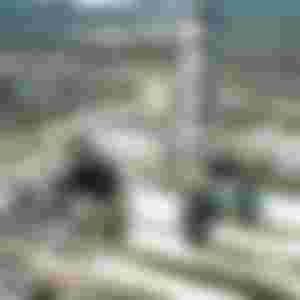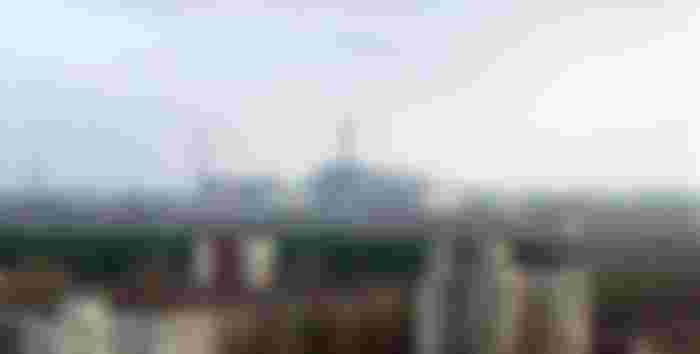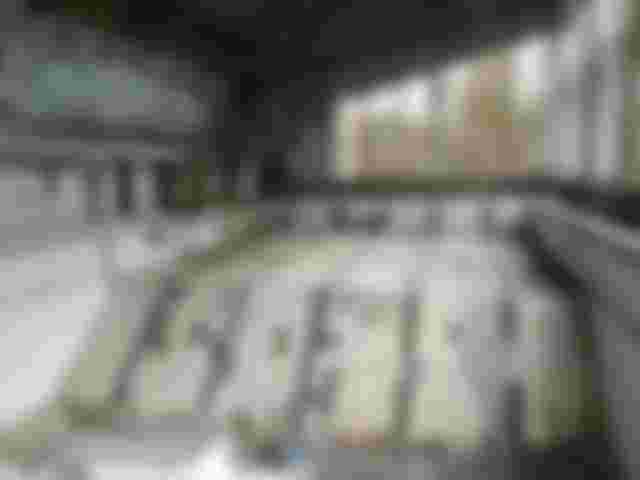While I was browsing videos on YouTube, this story was quite interesting because this man, Yevgeny Markevich, and his wife are living within the 30-kilometer exclusion zone and other inhabitants of the Chernobyl Nuclear Power Plant in Pripyat, Ukraine. The area is still contaminated 35 years after its worst nuclear disaster. (video below)
The area is off-limits and it is now a ghost town. Once, it was a lively city of Soviet Ukraine until it turned to ruins as thousands of people fled their city to relocate while emergency response teams tried to contain the blast affecting the environment around Pripyat.
Background of Pripyat & the Chernobyl Nuclear Power Plant

Named after the nearby river Pripyat, and located near the Ukraine-Belarus border in Northern Ukraine. Founded on February 4, 1970, and officially proclaimed a city in 1979 since the population went almost to 50,000. Near the city of Pripyat was the Chernobyl Nuclear Power Plant.
Known as the Vladimir Ilyich Lenin Nuclear Power Plant (named after Russia's first head of government and founder of the U.S.S.R.). The construction began in 1970, with its first reactor commissioned and completed in 1977, followed by another reactor in 1978, the third reactor in 1981, and the fourth reactor in 1983.
Two more reactors were added, but the construction was suspended and canceled 3 years after the incident. Each reactor is capable of producing 1,000 megawatts of electric power, and all four reactors can produce about 10% of Ukraine's Electricity. It was the first power plant built on Ukrainian soil and the third RMBK nuclear plant.
What Happened?

It occurred on April 25-26, 1986, when the technicians at Reactor No. 4 attempted an experiment. They shut down the reactor's power-regulating system, its emergency safety systems, and withdrew most of the control rods from its core while allowing the reactor to continue running at 7% power. On April 26, at 1:23 am, it went out of control.
Explosions triggered a large fireball and blew off the heavy steel and concrete lid of the reactor. The ensuing fire in the graphite reactor core released large amounts of radioactive material into the atmosphere where it carried great distances by air currents.
On April 27, 30,000 people were about to be evacuated and relocated to other cities/provinces of Soviet Ukraine. On the following day, monitoring stations from Sweden reported high levels of wind-transported radioactivity and pressed for an explanation. The Soviets tried to cover it up but admitted there was an accident in Chernobyl, hence making it an international outcry over the dangers posed by the radioactive emissions.
On May 4, both the heat and radioactivity leaking from the reactor core were being contained, but it could lead to great risk to workers. Radioactive debris were buried mostly at 800 sites, and the highly radioactive reactor core was enclosed in a concrete-and-steel sarcophagus.
The Aftermath?

Two people were killed in the explosion, others say it was closer to 50. More and more people contracted radiation sickness, and some of these people later died. The radioactivity spread by the wind over Belarus, Russia, then Ukraine as it reached France, and Italy.
The forest and farmland consisted of millions of acres that were also contaminated. Thousands of people were evacuated, but most of them remained in the contaminated areas at that time. Livestock were born deformed, and several thousands of people had radiation-induced illnesses.
The disaster sparked criticism of unsafe procedures and design flaws in their reactors. Reactor No. 2 was shut down after a fire triggered in 1991, while No. 1 remained operational until 1996, and No. 3 continued to operate until 2000 when the nuclear power station was officially decommissioned.
The Soviets created an exclusion zone, a 30-kilometer radius centered on the nuclear power plant, but it was expanded in later years to include heavily radiated areas outside the zone. Markevich tried different methods to enter after the evacuation at the time of the incident, but he chose to remain in his beloved city since 1945 and took protective measures against radiation.
He may have faced his fear of being infected by radiation, but Markevich misses how life was then in Chernobyl & Pripyat. Years after the incident, it left a cultural impact on the world. When the Bataan Nuclear Power Plant was built, the disaster was mentioned by former Pres. Corazon Aquino since she feared it may have the same result, making the site abandoned during her term.
The disaster was featured in documentaries to movies, and even in video games. It was the chosen location for one of Call of Duty: Modern Warfare's missions All Ghillied Up & One Shot, One Kill, where Capt. John Price (Lt. Price in 1996) recalls his mission along with his superior, Capt. MacMillan were sent to Pripyat, Ukraine, to eliminate Imran Zakhaev.
It was the worst nuclear accident to date, affecting everyone from their economy to the radioactive cloud as it spreads over Europe, which led to the eventual fall of the U.S.S.R. However, it left the city in ruins, and a lot of people, including those who tried to contain the blast paid the ultimate sacrifice.


